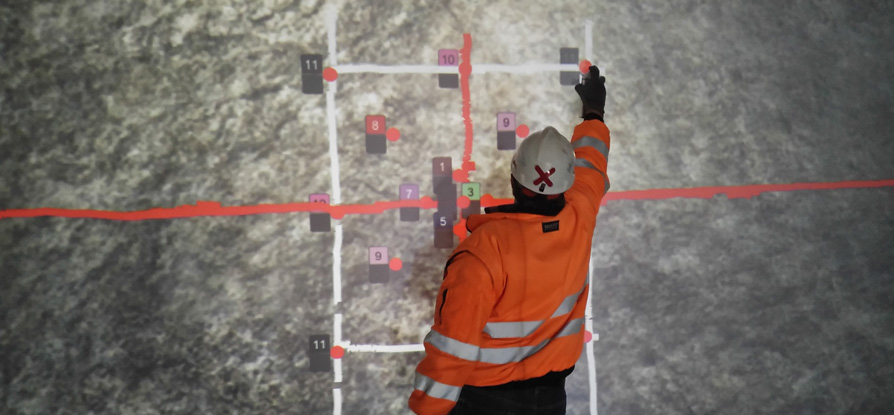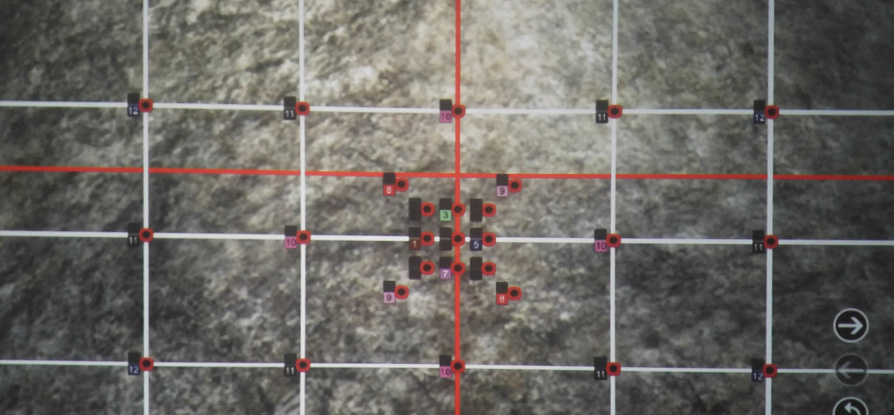Currently viewing: News Press Releases
Press Releases
-
Virtual technology now used for blast training in SA
Thursday, 17 August 2017
Training for underground blasting has just taken a technological leap forward, with the installation and commissioning of Africa’s first virtual reality blast wall with rear-view projection, powered by Simulated Training Solutions, at the Murray & Roberts Cementation Training Academy near Carletonville, west of Johannesburg.
“We are excited about the value that this facility will bring to our integrated learning programme,” says Tony Pretorius, education, training and development (ETD) executive at Murray & Roberts Cementation. “A tool like this is long overdue in the underground mining space, as traditional teaching and training methods for underground blasting practices are not as immersive and hence, effective as we would have liked them to be.”
Normal whiteboard training methods are limited to unrealistic representations, so many learners do not fully grasp the full concept of correct marking and timing of a blast round, he says. The VR blast wall, by contrast, offers a three-dimensional impression through the use of 3-D glasses in a containerised application which replicates the underground environmental conditions, and provides a more super realistic ‘look and feel’, right down to the workplace temperatures and sound effects.
Technology is increasingly important in the simulation of underground practical demonstrations, says Pretorius, and the blast wall simulation will augment the Training Academy’s blended learning approach which combines the use of integrated e-learning programmes and the use of inert explosives in a mock up environment to facilitate learner applied competence.
“The VR blast wall is designed to teach workers practically how to take line and grade, mark off the blast pattern/burden and time the round to ensure the correct firing sequence in pursuance of a safe quality blast,” he says.
While the training on the drilling and physical charging stages of the blasting process takes place in another mock-up environment on campus, learners can then return to the VR blast wall to harness their skills in essential blasting practices.
“We have invested in this technology because it can improve the performance of the learners in our three key priority areas to achieve a daily, safe, quality blast,” he says. “There is no silver bullet in the learning process, but advances like these continually improve the combined impact of all our integrated educational initiatives.”
The size of the simulator is also significant, as it matches the scale of a standard 3 m by 4 m development end. Situated in a containerised environment, the VR blast wall allows learners to ‘paint’ their centre and grade lines using the click-and-drag functionality usually associated with computers. Only this time, the ‘mouse’ is shaped like a spray can, offering a close simulation of the real thing.
Using the power of computers and an interactive screen, the facility provides learners with the opportunity to test their abilities in a safe and ‘erasable’ environment which can also record and store their performance for assessment purposes.
“Importantly, the exercises that learner miners undergo at the VR wall provides them with the vital skill of how to read a survey note, which cannot be accomplished effectively with traditional methods,” he says.
He expects the VR blast wall to be used by all learner miners engaged in blasting-related activity, which comprise about a quarter of the 200 mineworkers that pass through the academy each month; this means that as many as 600 workers could benefit each year.
Interested parties from all over the country have already visited the academy to view the facility, says Pretorius, and they have expressed enthusiasm about the benefits it holds for the skills development of their staff.
“More than likely, we will be growing this type of technology in collaboration with Simulated Training Solutions for the business and we look forward to sharing this expertise in the service of safety and productivity in the industry,” he says. “We have always shared best practices very openly, especially to advance safer mining.”
VR BLAST WALL PIC 01 : An instructor stands in front of a rear-view screen at Murray & Roberts Cementation Training Academy’s newly installed virtual reality blast wall, digitally ‘marking off’ the centre line, grade line and drill holes.

VR BLAST WALL PIC 02 : This on-screen view of a simulated blast wall in a development end shows how 3-D virtual reality technology helps learner miners to practice blast hole placement and timing.

